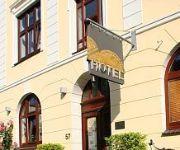Facts and Data
Webpages:
Official Unesco Page
World Heritage: Hanseatic City of Lübeck
Basis Data:
Unesco World heritage since: 1987
Size of heritage: 81 ha
- Buffer zone: 694 ha
Coordinates:
Longitude: 10,692°
Latitude: 53,867°
Summary
Lübeck – the former capital and Queen City of the Hanseatic League – was founded in the 12th century and prospered until the 16th century as the major trading centre for northern Europe. It has remained a centre for maritime commerce to this day, particularly with the Nordic countries. Despite the damage it suffered during the Second World War, the basic structure of the old city, consisting mainly of 15th- and 16th-century patrician residences, public monuments (the famous Holstentor brick gate), churches and salt storehouses, remains unaltered.
Location on Map
Show bigger map on Openstreetmap
The Hanseatic City of Lübeck: A Historic Gem in Germany
The Hanseatic City of Lübeck, located in the state of Schleswig-Holstein, Germany, is a UNESCO World Heritage site that holds a significant place in European history. This enchanting city, situated on the banks of the River Trave, is renowned for its well-preserved medieval architecture and its role as a prominent trading hub during the Hanseatic League.
History
Lübeck's history dates back to the 12th century when it was founded as a trading settlement by Count Adolf II of Schauenburg. Its strategic location on the Baltic Sea made it an ideal center for maritime trade, and it quickly flourished. In 1226, Lübeck became a free imperial city, granting it autonomy and allowing it to establish its own laws and governance.
During the 14th and 15th centuries, Lübeck became a leading member of the Hanseatic League, a powerful alliance of merchant guilds that dominated trade in Northern Europe. The city's wealth grew exponentially, and it became a major player in the Baltic Sea trade routes. The iconic Holstentor, a medieval city gate, stands as a testament to Lübeck's historical significance during this period.
However, Lübeck's golden age came to an end in the 16th century when the city faced economic decline due to changing trade patterns and political unrest. Despite this setback, Lübeck managed to preserve its architectural heritage, and its historic city center remains remarkably intact.
Current State
Today, the Hanseatic City of Lübeck is a captivating destination that attracts visitors from around the world. Its UNESCO World Heritage status, awarded in 1987, recognizes the city's outstanding universal value and its exceptional preservation of medieval architecture.
The historic city center, known as the Altstadt, is a maze of narrow cobblestone streets lined with picturesque gabled houses, grand churches, and charming courtyards. St. Mary's Church, the largest brick Gothic church in Germany, dominates the skyline with its impressive spires. The Rathaus, or City Hall, is another architectural gem that showcases the city's rich history.
One of the highlights of a visit to Lübeck is exploring the Holstentor, the city's most famous landmark. This imposing gate, with its twin towers and red-brick facade, serves as a symbol of Lübeck's medieval past. Inside, the Holstentor Museum offers insights into the city's history and the Hanseatic League.
Lübeck is also renowned for its marzipan, a sweet almond paste delicacy. Niederegger, a marzipan manufacturer founded in 1806, has its flagship store in the city. Visitors can indulge in a variety of marzipan treats and learn about the history and production of this delectable confection.
With its rich history, architectural splendor, and cultural offerings, the Hanseatic City of Lübeck continues to captivate visitors. Its UNESCO World Heritage status ensures the preservation of this historic gem for future generations to appreciate and enjoy.
Hotels and places to stay
Atlantic
Holiday Inn LUBECK
Centro Hotel Kaiserhof DELUXE
Ko 15
Excellent
An der Marienkirche
Klassik Altstadt
Ringhotel Jensen
Zur Alten Stadtmauer
Am Mühlenteich
Videos from the area
Videos provided by Youtube are under the copyright of their owners.



















